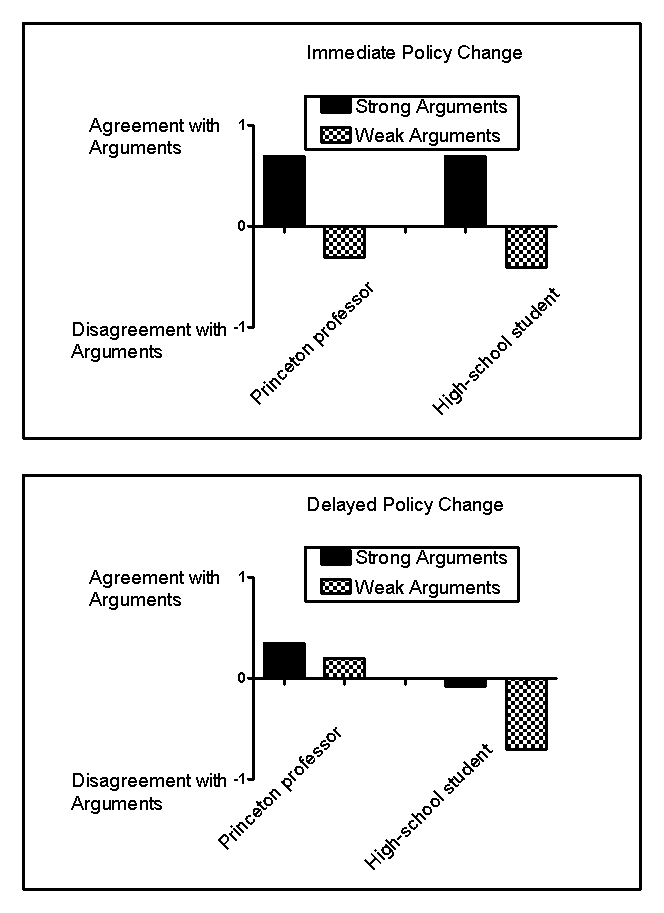Use the following to answer questions
Scenario II
The following scenario contains fabricated results consistent with the following study:
Petty,R.E. ,Cacioppo,J.T. ,& Goldman,R.(1981) .Personal involvement as a determinant of argument-based persuasion.Journal of Personality and Social Psychology,41,847-855.
Every day,consumers are exposed to scientifically based sales,marketing,and public relations strategies designed to influence purchasing decisions,change opinions,or win votes.One common sales strategy is the foot-in-the-door technique,a method that involves first making a smaller request that consumers are likely to grant and then following it with a larger request.Another common strategy is the door-in-the-face technique,which involves making an unreasonably large request that consumers will reject and then following it with a smaller request.When persuasion is necessary,it usually takes one of two forms: heuristic persuasion,which involves an appeal to habits or emotion,and systematic persuasion,which involves an appeal to facts and reason.Often,people will rely more on heuristics-simple shortcuts or "rules of thumb"-to make decisions instead of systematically weighing the evidence.
Petty and colleagues (1981) investigated some of these techniques in college students listening to arguments in favor of their college requiring an institution-level comprehensive final examination for graduation.Some students were led to believe that,if adopted,this policy would take place right away,and some were led to believe that the change would take place in a decade.In addition,some of the students were led to believe that they were listening to an argument from a Princeton professor,and others were led to believe that they were listening to an argument from a high-school student.Finally,some students heard strong arguments in favor of the policy,and some heard weak arguments.Thus,the experiment arranged six groups of students.For example,one group of students heard strong arguments from a high-school student about a far-removed policy change.Figure 13.1 shows fabricated results illustrating the major findings of this experiment.
Figure 13.1 
-(Scenario II) Which factor is NOT an independent variable in the Petty and colleagues (1981) experiment?
Definitions:
Surgical Incision
A precise cut made through the skin and tissues during a surgical procedure to access or remove something within the body.
Skull
The bony structure forming the head, protecting the brain.
Radiograph
An imaging technique using X-rays to view the internal form of an object, commonly used to check bones and organs.
Combining Form
A word element used in linguistic composition, primarily in medical terminology, to combine with another form to create a word with a new meaning.
Q6: People who report having many daily hassles
Q7: The fear of confirming negative beliefs that
Q59: Women tend to score higher than do
Q60: Teenagers who score low in extraversion are
Q106: The actor-observer effect occurs primarily because people
Q109: Julie probably would feel MOST dissatisfied with
Q156: Public health professionals have recognized for some
Q173: The word stereotyping was coined by:<br>A)Joseph Pulitzer.<br>B)William
Q193: Approximately what percentage of U.S.adults have made
Q227: Metaphorically,sometimes the voice of the superego sounds